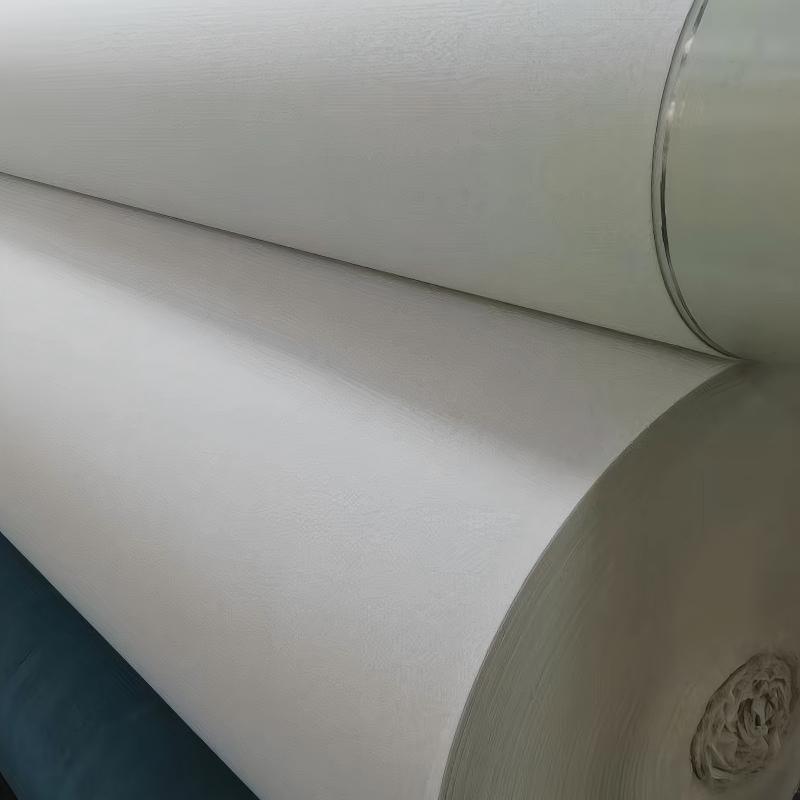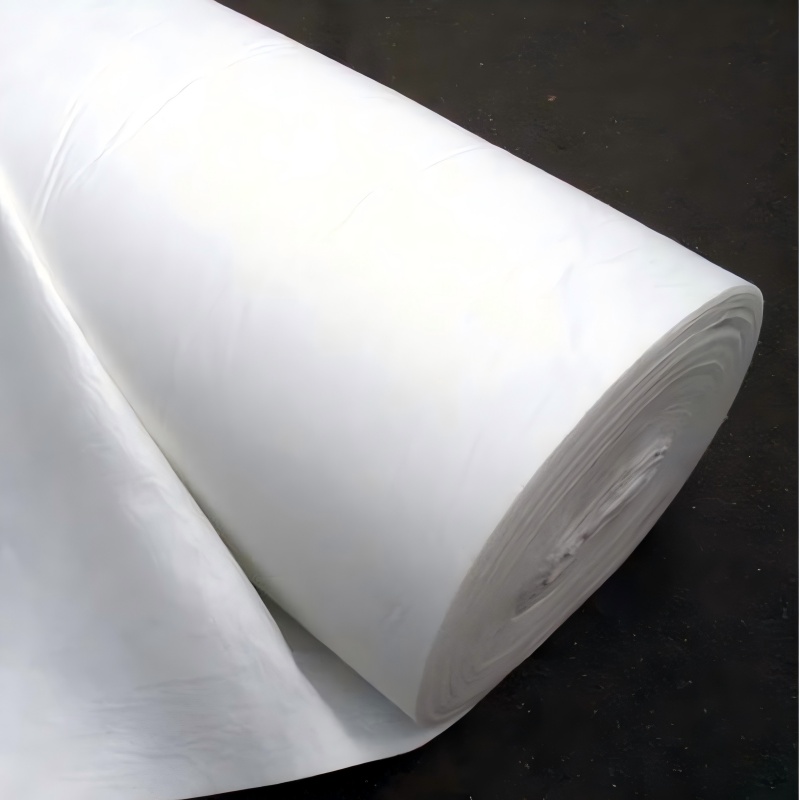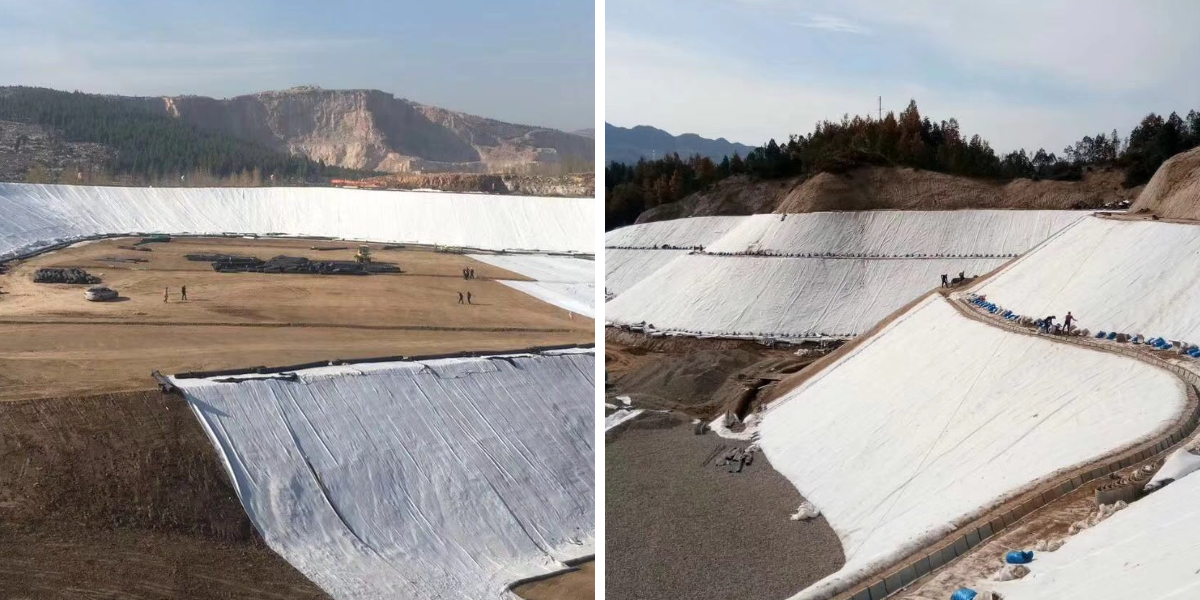Geotech Road Fabric
1. Stable roadbed: less settlement, no collapse or cracking:Enhance the roadbed, disperse vehicle pressure, and make soft soil sections more stable.
2. Barrier material: not mixed or loose:Separate gravel and soil, filter rainwater to prevent soil particle loss.
3. Long lifespan: minimal maintenance and cost savings:Reduce wear and aging, use for a few more years than ordinary roads, and spend less money on repairs.
4. Easy construction: fast progress, no terrain selection:Materials are lightweight and easy to lay, without the need for complex equipment, making it more efficient to meet deadlines.
Product Introduction
1、 Basic attributes
The raw materials for Geotech Road Fabric are mostly synthetic materials such as polypropylene and polyester, which are divided into two categories: woven (with tight structure and high strength) and non-woven (with high porosity and good drainage); With certain thickness and unit mass, it is tensile, corrosion resistant and aging resistant, and can adapt to complex road environment.
2、 Core functions
Reinforcement enhancement: laid between road layers to disperse vehicle loads, reduce settlement and cracks, and improve the bearing capacity of soft soil foundations and heavy-duty roads.
Filtering and drainage: intercepting soil particles to prevent blockage, while exporting accumulated water in the road to avoid softening of the roadbed.
Isolation and protection: Separate different material layers on the road to prevent material mixing and protect the integrity of each layer structure.
3、 Main features
Strong adaptability, different types can be selected according to road requirements; Convenient construction and simple laying; Good durability, able to resist acid, alkali, and ultraviolet rays for a long time, reducing road maintenance costs.
Product Parameters
project | metric | ||||||||||
Nominal strength/(kN/m) | |||||||||||
6 | 9 | 12 | 18 | 24 | 30 | 36 | 48 | 54 | |||
1 | Longitudinal and transverse tensile strength / (kN/m) ≥ | 6 | 9 | 12 | 18 | 24 | 30 | 36 | 48 | 54 | |
2 | Maximum elongation at maximum load in longitudinal and transverse directions/% | 30~80 | |||||||||
3 | CBR top penetration strength /kN ≥ | 0.9 | 1.6 | 1.9 | 2.9 | 3.9 | 5.3 | 6.4 | 7.9 | 8.5 | |
4 | Longitudinal and transverse tearing strength /kN | 0.15 | 0.22 | 0.29 | 0.43 | 0.57 | 0.71 | 0.83 | 1.1 | 1.25 | |
5 | Equivalent aperture O.90(O95)/mm | 0.05~0.30 | |||||||||
6 | Vertical permeability coefficient/(cm/s) | K× (10-¹~10-), where K=1.0~9.9 | |||||||||
7 | Width deviation rate /% ≥ | -0.5 | |||||||||
8 | Unit area mass deviation rate /% ≥ | -5 | |||||||||
9 | Thickness deviation rate /% ≥ | -10 | |||||||||
10 | Thickness coefficient of variation (CV)/% ≤ | 10 | |||||||||
11 | Dynamic perforation | Puncture hole diameter/mm ≤ | 37 | 33 | 27 | 20 | 17 | 14 | 11 | 9 | 7 |
12 | Longitudinal and transverse fracture strength (grab method)/kN ≥ | 0.3 | 0.5 | 0.7 | 1.1 | 1.4 | 1.9 | 2.4 | 3 | 3.5 | |
13 | Ultraviolet resistance (Xenon arc lamp method) | Longitudinal and transverse strength retention rate% ≥ | 70 | ||||||||
14 | Ultraviolet resistance (fluorescence UV lamp method) | Longitudinal and transverse strength retention rate% ≥ | 80 | ||||||||
Product Application
1. Soft soil foundation road engineering
Soft soil foundations (such as swamps and silt areas) have low bearing capacity and are prone to settlement. After laying geotextile fabrics (often using high tensile fabrics), vehicle loads can be evenly distributed to a larger area of soil, reducing foundation compression deformation and avoiding road depressions and cracks. For example, when used on soft foundation sections of rural roads and highways, it can significantly reduce post construction settlement and improve overall road stability.
2. Heavy duty roads and freight dedicated lines
Freight roads and industrial park roads are prone to cracking at the grassroots level due to stress concentration caused by long-term heavy vehicle loads. Laying geotextiles between the base and sub base layers can enhance interlayer interlocking, resist tensile force, reduce base damage, and extend road service life. It is commonly used in scenarios such as port freight channels and internal roads in logistics parks.
3. Road drainage in rainy areas
Areas with frequent rainfall or high groundwater levels are prone to water accumulation inside roads, leading to softening of the roadbed. At this time, choosing non-woven geotextiles with high porosity can not only intercept soil particles to prevent drainage channel blockage, but also quickly remove accumulated water from the base and roadbed, reduce soil moisture content, and avoid roadbed instability. For example, this scheme is commonly used on rural roads and mountainous roads in rainy provinces in the south.
4. Road widening and maintenance renovation
In the widening project of old roads, longitudinal cracks are prone to occur due to the different materials and settlement rates of the new and old roadbeds. Laying geotextiles at the junction of old and new roadbeds can enhance their connection and reduce differential settlement; During road maintenance, it can also be laid under the new base layer to isolate the damaged layer of the old road from the new material, preventing impurities from mixing and affecting the strength of the new layer.
5. Road protection in special environments
In special areas such as saline alkali land and mining areas, soil acidity and alkalinity are strong. Choosing corrosion-resistant modified geotextile fabrics can resist soil erosion and microbial decomposition, and protect the road structure layer from damage; In addition, in permafrost regions, it can also assist in reducing the damage of freeze-thaw cycles to the roadbed and maintaining stable road performance.
In summary, geotextile is not a single functional material, but a key material that can provide "problem solving" application solutions for different road engineering pain points such as soft foundation, heavy load, rainy weather, old road reconstruction, and special environments. Its application not only reduces the occurrence of road diseases from the source, lowers maintenance costs in the later stage, but also adapts to various engineering needs, providing strong guarantees for the stability and durability of roads in different scenarios. It is an important support for improving construction quality and efficiency in modern road engineering.













